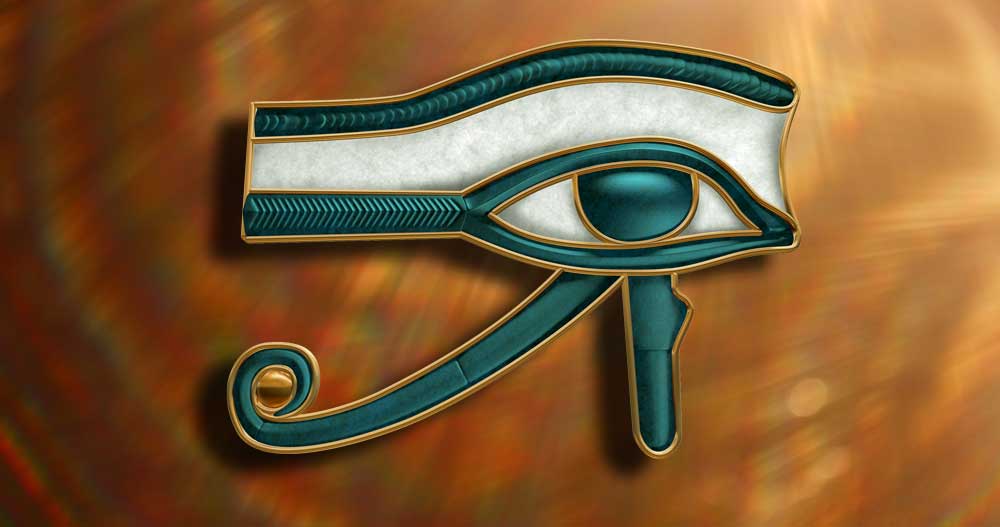In the pantheon of ancient Egyptian symbolism, few motifs evoke as much intrigue and fascination as the Eye of Horus. Also known as the Wedjat or the Eye of Ra, this powerful emblem has captured the imagination of scholars, artists, and mystics for millennia. With its enigmatic origins and rich symbolism, the Eye of Horus continues to be a subject of scholarly study and spiritual contemplation in the modern world.
Table of Contents
ToggleOrigins and Symbolism
The Eye of Horus finds its roots in ancient Egyptian mythology, where it is closely associated with the falcon-headed god Horus, a deity revered as the god of the sky, war, and protection. According to myth, the Eye of Horus was originally a symbol of healing and protection, attributed to the god’s ability to restore sight and provide protection against evil forces.
One of the most enduring legends surrounding the Eye of Horus involves a battle between Horus and his uncle Seth, the god of chaos and disorder. In this myth, Horus loses his left eye during the conflict, which is later magically restored by the god Thoth. This event symbolizes the triumph of order over chaos, light over darkness, and is often interpreted as a metaphor for the eternal struggle between good and evil.
Iconography and Representation
Depictions of the Eye of Horus vary in style and complexity, but they typically feature a distinctive design resembling a stylized human eye with markings below it. These markings are thought to represent the cosmetic application worn by ancient Egyptians, with the teardrop-shaped marking below the eye symbolizing a cosmetic adornment or possibly the falcon god’s tear shed during the battle with Seth.
The Eye of Horus is often depicted as a single eye, but it can also be shown in a mirrored form, with a left eye representing the lunar aspect associated with the goddess Hathor, and a right eye representing the solar aspect linked to the god Ra. This duality reflects the Egyptian worldview, which emphasized balance and harmony between opposing forces.
Spiritual and Magical Significance
In addition to its mythological and symbolic associations, the Eye of Horus held profound spiritual and magical significance for the ancient Egyptians. It was believed to possess protective powers, warding off evil spirits and ensuring the well-being of the wearer. Amulets and charms featuring the Eye of Horus were commonly worn as talismans for protection and good fortune, both in life and in the afterlife.
Moreover, the Eye of Horus was also associated with concepts of wisdom, knowledge, and enlightenment. It was believed to bestow insight and clarity upon those who sought its guidance, serving as a symbol of divine wisdom and spiritual awakening.
Modern Interpretations
Despite its ancient origins, the Eye of Horus continues to resonate with people around the world in the modern era. Its symbolism has been adopted by various esoteric traditions, including Hermeticism, Freemasonry, and New Age spirituality, where it is often interpreted as a symbol of spiritual insight, inner vision, and divine protection.
Furthermore, the Eye of Horus has found its way into popular culture, appearing in art, literature, and media as a potent symbol of mystery and mysticism. Its enduring appeal speaks to the timeless fascination with ancient Egypt and the enduring power of symbolism to transcend cultural boundaries and resonate with the human psyche.
Conclusion
The Eye of Horus stands as a testament to the enduring legacy of ancient Egyptian civilization and the profound wisdom encoded within its mythological and symbolic traditions. As a symbol of protection, healing, and spiritual insight, it continues to inspire awe and wonder in the hearts and minds of those who seek to unlock its mysteries and tap into its timeless power.




